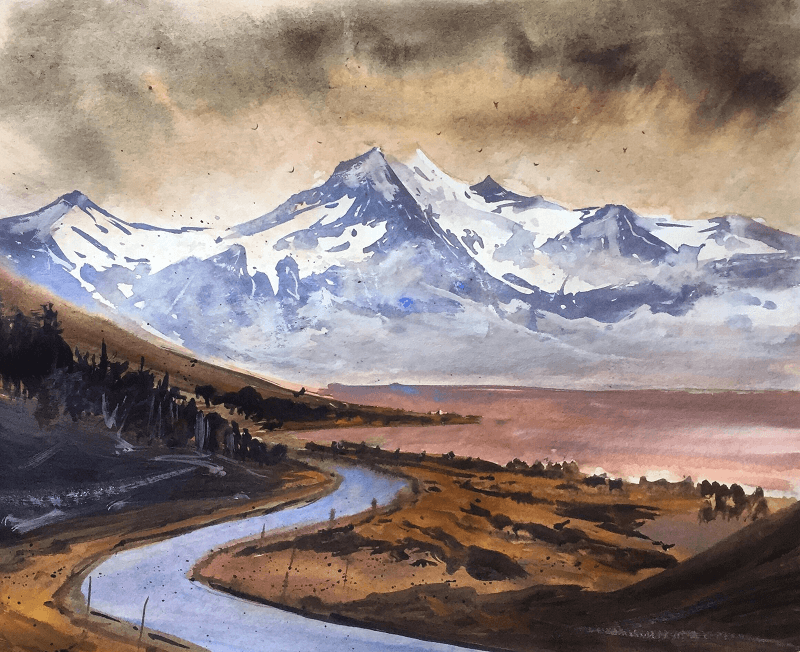The elevation of Machu Picchu is one of the most popular tourist destinations in the world. Some people know that it is located in the Andes Mountains in Peru. In geography, it is normal to suffer from the ‘height of the disease’. It’s an important reason to know the height of the Inca city and every tourist place.
You will feel that you have arrived at a very special place from the moment you disembark in Cusco. Located in the central Andean region. Capital of the Inca Kingdom, you will be welcomed amidst large meadows. Brick houses, and smiling faces, ready to show you all that this wonderful place has to offer.

In the midst of so many new things, it’s normal to feel trembling faster and breathing harder. Yes, perhaps it is because of the tendency to land in an area. Where a new civilization has been created but probably because of the high altitude. So there is a clear risk of disease due to the altitude.
You must understand these risks to take the best precautions and be well informed. About how to treat high illness and severe, swollen stress. Highly educated brain (HACE) and high-grade edema (HAPE) are rare conditions in Machu Picchu forest research.
In detail, this article focuses on altitude sickness. In Machu Picchu, we give general information on the acclimatization process. An overview of advanced diseases, HACE and HAPE, and details on preventive drugs, such as Diamox, and natural treatments, e.g. Coca Leaves.
Contents
Elevation of Machu Picchu Climate
- The climate is quite mild throughout the year. With abundant rains between November and March. Dry and hot from April to October, and it’s recommended to visit the suitable seasons. The lowest annual temperature is between 8 and 11.2 degrees Celsius.
- In June, July, and August, the temperature generally falls below the freezing point. The maximum annual temperature varies from 20.4 to 26.6 degrees Celsius.
- Machu Picchu is the birthplace of the largest archaeological exhibition of the Incas. The most visited and internationally known in Peru, and an important tourist destination. Gushu is located 110 km from Cusco by train; the city offers accommodation for tourists and is a recreation center for all tourists arriving at Machu Picchu. It is also a hot spring favorite by travelers.
Acclimatization
- Acclimatization is a process by which the body is accustomed to lowering oxygen levels. And taking time at various times before progressing due to high altitude.
- There are three great altitudes in mountain climbing:
- Altitude describes the altitude zone between 2,500m and 3,500m.
- Very high altitudes between 3,500m and 5,500m.
- Maximum altitude 5,500 m.
- Other areas are above extreme height. But these zones are limited to the Himalayas – just like dead zones over 8,000 meters!
- Most people can rise to 2,400 meters above sea level without altitude sickness. But in addition to the change in oxygen, height and pressure began to affect the physiology of people.
- What makes walking in Machu Picchu difficult and potentially dangerous is the speed with which you reach high altitudes. If not all, tourists come to Machu Picchu to fly to Cusco. Which is 3,400 meters high – on the edge of the high and very high area.
- At the sea level (such as Lima, Peru). Oxygen saturation is about 21%, and atmospheric pressure is about 760 mm Hg (mm Hg).
- When oxygen saturation is higher, stable, but air density decreases, which means that the% of oxygen per breath decreases. (Imagine that oxygen molecules move farther and farther away from each other at higher altitudes.)
- For example, at 3,600 m (above Cusco). The air pressure is about 480 mmHg and less than 40% oxygen per breath at sea level!
Continue Reading
- A few hours after your arrival in Cusco. You will feel the “goodness” of the air, and even walking a short distance will suffocate you.
- The good news is that the body is very creative. And takes immediate steps to start managing reduced oxygen levels by breathing.
- First, you will notice that your breathing is faster and deeper. (Even in the pause) – This is a good sign, so accept it!
- The second thing that happens is the number of red blood cells – where the oxygen in the blood increases.
- Third, pulmonary capillaries feel increment in the rate of blood pressure. Therefore, forcing blood into the unused lung area during respiration at the sea-level state.
- Eventually, some enzymes will be released to help transfer oxygen more efficiently from hemoglobin to blood tissues.
- When time is allowed for an acceptable level to begin “acceptable”. The body adjusts and evolves to a higher level while there are no symptoms.
- To illustrate this point, climbers create a term called acclimatization, which describes altitude sickness in the elderly.
elevation of the Machu Picchu
- Let’s say your elevation of the Machu Picchu line is 3,000 feet or more. On the first day, you covered 3,000 meters and showed no symptoms because you were under the condition.
- A night or two at this altitude will ensure that you are fully adapted to the environment. And that your cable can grow to 3,800 meters and then walk up to 3,700 meters. And you will have no symptoms. But if you keep climbing 4,000 meters, you could get sick.
- Lower yourself below your air conditioner (3,800 m) to rest for a day or two. And in case of any unhealthy illness should continue to improve even if your condition worsens.
- Problem: recovery for a day or two, close to the line usual to the condition of one. Usually corrects altitude sickness. But continuing before you get used to the right state will almost guarantee that. Your symptoms will get worse, and you will not get used to the next state.
Acclimatization on Machu Picchu trails
How is the acclimatization by trekking to Machu Picchu?
- As mentioned above, Cusco is already high and generally over acclimatization.
- That is why symptoms of the disease at a slight increase are common.
- For pedestrians, the best solution, in our opinion. It’s to stay in Cusco for at least two days. To fast with a high fever and get used to the condition. (Most tourists use a two-day adjustment period in Cusco.
- All roads to Machu Picchu involve high crossings (over 4,500 m), hence acclimatization, even at relatively high levels.
- Or if you have just arrived at Chu Picchu (2,430m) by train. You can fly to Cusco (3,400m) and descend into the Holy Valley (1-2 hours by bus). To Urubamba (2,800 m) or Ollantaytambo (2,792 m), which is easy to start conditioning.
- I stayed here a day or two before traveling to Machu Picchu by train, leaving Ollantaytambo. It can help decrease the likelihood of illness high.
- That said, you will still have to return to Cusco after Machu Picchu, which can result in a high fever.
- The ideal situation is to fly to Cusco and immediately drive to the Sacred Valley for a few days. Then return to Cusco for a few days to rest and start the journey. Most people don’t have the time or inclination to do this.
Altitude Sickness and Symptoms
- Altitude sickness also called acute mountain sickness (AMS) or altitude sickness is a pathological condition caused by a very rapid altitude.
- Most people suffer from diseases at an altitude of 3,000 meters. Some people can have diseases at an altitude of only 2,400 meters. Unfortunately, no relationship between age, fitness, health, and gender helps predict susceptibility to disease. Of height.
- We know for sure that an increase of more than 500 m per day, from 2,400 m, increases the likelihood of altitude sickness and exercise at altitude and dehydration.
- Advanced disease can be divided into three levels – mild, moderate, and severe. Generally, you go from mild symptoms to acute and more severe symptoms as conditions get worse.
- In other words, there are usually early warning signs that you are suffering from altitude sickness. Serious conditions such as HACE and HAPE can occur when symptoms worsen.
Symptoms
- Altitude illnesses include headache, fatigue, and nausea and, dizziness, loss of appetite, shortness of breath, and sleep disturbances.
- Severe altitude sickness usually occurs between 12 and 24 hours after reaching altitude, and it is common for visitors to Cusco to rest for 24 to 48 hours. Correct the symptoms when the symptoms pass at the height at which they started. You can assume that you are getting used to that height.
- This may indicate that you have a high fever. Rest and drinking water are the best way to heal at the same time. (Chewing cocaine leaves or drinking cocaine, is a good solid remedy), but if things are unbearable, ensure you don’t try levels of High altitude since even the pain killers will not help.
Lake Louise AMS system
The Louis Lake AMS system is a way to test the quality of your symptoms. Results between 3 and 6 are a sign of mild to moderate illness. A higher score of 6 is a sign of high Altitude disease.
High Altitude Cerebral Edema (HACE)
- High Altitude Cerebral Edema (HACE), is a condition associated with serious illnesses. And occurs when pressure forms, resulting in a fluid flow through the capillary walls of the skull. It is a very rare condition to explore the Machu Picchu forest.
- HACE’s symptoms include horrific migraines, hallucinations, loss of coordination and dizziness, loss of memory, and, finally, unconsciousness and unconsciousness.
- HACE tends to attack at night. Do not waste time, causing people to fall to high altitudes. If you suspect HACE, don’t wait until the day goes down.
- If you have sufficient oxygen. It can however be administered along with dexamethasone But these things need to be used with a quick descent.
High Altitude Pulmonary Edema (HAPE)
- Like HACE, High Altitude Pulmonary Edema (HAPE) is another advanced disease that involves the flow of fluids into the lungs. Pulmonary fluids effectively prevent the exchange of oxygen with the bloodstream.
- Signs that someone is suffering from HAPE, including shortness of breath (even at rest) the chest is very tense, a feeling of suffocation, especially during sleep.
- The above information is very punitive and ceases. It is important to remember that high disease and its species, HACE and HAPE, are rare in the trajectory of Mach Picchu.
The Altitude Sickness Rules
You will not drive to the highest peaks, and all trails have good high profiles that allow for sufficient descents after passing the high trails.
However, there are some golden rules to remember:
If you feel low, let’s say its altitude. If symptoms worsen after waiting at height, go down immediately.
In addition to these rules, we recommend following these basic principles:
- Get used to at least two days in Cusco – where you relax and drink plenty of fluids.
- Make sure you always have moisture at all times – Drink 2-3 liters of water daily.
- Go slow, enjoy the view, and don’t exercise too much.
- Avoid smoking, alcohol, and stimulants.
- Collaborate with reputable professionals who hire guides who understand the risks of altitude sickness and have enough training/equipment to deal with any problems – we give free advice here.
- Increase slightly by 500-700 meters per day and try to increase the walking and sleeping height. This last point is beyond your control. Because the road to Machu Picchu is designed with these qualities.
- Be careful not to exercise individuals who suffer from HAPE symptoms, as this can worsen the condition. If existing oxygen is administered, the drug Nifedipine has been shown to treat the disease. But the descent is only a pleasure.
The medication of Altitude Sickness and also Natural remedies Diamox (Acetazolamide)

- Acetazolamide, Also known as Diamox, is a drug that is effective in alleviating the effects of altitude sickness. It is a preventative (preventive) medicine, not a medicine.
- In other words, it helps you get used to the disease faster. And helps prevent altitude sickness. But it cannot heal.
- In some countries, medications must have a prescription. But usually, it can be bought over the counter; however, you should consult a doctor before using it. Pregnant women or people with kidney and liver problems should not take medication.
- Additional effects include vomiting, increased urination. Drowsiness Numbness, nausea, and nose and toes tingling.
- Three of the side effects, at last, can be mistakenly be linked with altitude sickness. Hence being recommended for some dialysis in a couple of few weeks. Before leaving for Machu Picchu to test for any side effects.
- Diamox is usually sold in tablets, 250 grams. Chess players usually take 125g in the morning and the remaining 125g in the evening, starting the day before arrival in Cusco and ending on the first day of departure in Cusco.
- We believe that the use of Diamox is an economic preventative measure. But it is advisable to consult a doctor before doing so.
Coca Leaves of Coca Tea

- Cocaine is a plant that grows naturally in Peru and has a particular feature in Andean culture due to its medicinal and superstitious properties.
- The pharmacologically active ingredient in the chicken plant, called chicken alkaloids, accounts for about 0.8% of fresh and refined leaves, causing cocaine. Drinking cocaine tea or chewing the leaves does not have the same effects as cocaine.
- When chewing, cocaine can act as a mild stimulant. And is shown to suppress hunger, fatigue, thirst, and pain. Traditionally, several Andean cultures use cocaine leaves for many medicinal, nutritional, and religious purposes.
- One of the traditional uses is to prevent diseases due to altitude. Residents chew the leaves or drink chicken tea and encourage tourists to do the same as preventative measures.
- However, there is no conclusive evidence that cocaine leaves can prevent high disease or help treat symptoms.
- The jury also uses other natural medications, such as Ginkgo Biloba, although a study in 2007 found evidence that G. Biloba helps prevent high levels of the disease.
- From our point of view, more research is needed in these areas to conclude.
In Conclusion
Since the elevation of Machu Picchu put many people at risk of getting the Altitude sickness, two recommendations can help curb the situation.
One option is to be in a city at a lower altitude, for example) Pisac (2,715 m) or Ollantaytambo (2,792 m both are located in the Sacred Valley, both slightly above the 2,500-meter mark, but the risk of disease due to the High altitude Is less than in Cusco. Or you can go to a lower city if you struggle with altitude in Cusco.
If you are traveling to Cusco from Lima, we recommend following the Peruvian jump to the coast and Cusco from the more beautiful city of Arequipa than direct flights. It is known that a gradual increase in height by road transport helps to drastically reduce disease. The moderate altitude offers the opportunity to get used to the climatic conditions and help avoid problems when visiting the UNESCO World Heritage Site.
Don’t forget to carry sunglasses, a hat, and a bottle of water and a warm jacket & backpacking tent too the weather is unpredictable.
There are a promotional Package Here To get a chance to Visit Machu Picchu free
Reference: Wikipedia
Hi, I am Michael B.McMahon. I am a professional Hiker, Traveler, Climber & Mountainer. I love to travel a lot. I describe my all experience in this blog. I visit a lot of places. I hope my all article helpful everyone. Enjoy It




